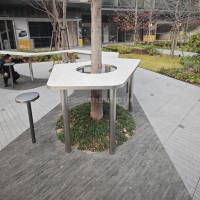Welcome to the website for landscape facilities products and knowledge.
How does the design prevent the trash can from being damaged by falling branches or debris?
Modern trash cans designed for outdoor use incorporate several key features to prevent damage from falling branches or debris. First, many high-quality models are constructed from heavy-duty materials like reinforced polyethylene or powder-coated steel, which resist dents and cracks upon impact.
Some designs feature a sloped or rounded top that allows branches to slide off rather than accumulate, reducing pressure on the lid mechanism. Others include reinforced corners or ribbed exteriors that distribute impact forces across the entire structure.
Innovative designs may incorporate flexible materials in vulnerable areas, allowing the can to absorb shocks without permanent deformation. Many commercial-grade trash cans also position their structural supports internally to create a protective outer shell.
For areas with frequent falling debris, some manufacturers offer trash cans with impact-resistant coatings or composite materials that combine durability with flexibility. The best designs balance weight (to prevent tipping) with material resilience to withstand both direct hits and gradual pressure from accumulated debris.
Proper placement also plays a role - many durable trash cans include ground anchors or weighted bases to maintain stability during storms when branch fall is most likely. These combined features ensure outdoor trash receptacles maintain functionality and appearance despite environmental challenges.
Related search:

Recommendation
An outdoor bar counter with stainless steel and terrazzo materials in an irregular shape